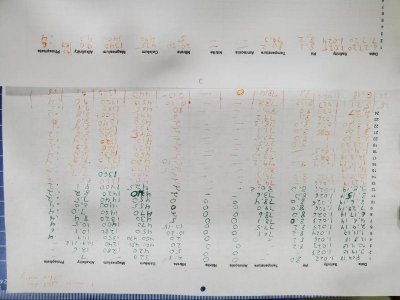If I kept a fish-only, personally, I'd still keep one rock of discosoma mushrooms. They'll tell you when the water needs fixing by not opening full every day. Fish just smile and say, "I'm fine" until they're down. I view hardy coral as a living water test. And discosomas are not hard to please, moderately adequate light and water in the good range, and they're cool. They also add a bit of color.
Softies like buttons, mushrooms, and various non-stony corals like kenya tree and encrusting polyps (green star) etc, take nothing more than lighting and good water. No special equipment. But stability. And a little coral-diplomacy, which means don't put a cantankerous cabbage leather coral (they all are cantankerous for no reason) upstream of your zoas.
Zoas, btw, are prone to nudi infestations, and you should hold them in quarantine for a couple of weeks, looking them over daily to be sure nothing hatched. But once in and happy, they will spread.
Green star is so happy in a really good water system you have to beat it back with a stick. It'll grow right up the glass, in which case you have to peel some of it off and find a store that wants it.
If you want to invest in a kalk system (supplies calcium hand over fist) you can raise stony corals, either the fluffy ones or the colored sticks. Personally, I'd advise fluffy, for beginners. Lighting is critical for the stonies: you need good lights designed for corals. You also need a kalk system, which can be as simple as feeding 2 tsp powdered kalk per gallon into your ordinary topoff water, or as spendy as a controller, with all its abilities. These corals will tell you (just like mushrooms) when they're not happy, but they're fussier, and can be wiped out by putting, say, a torch coral next to a more delicate specimen. They have tentacles, some with a 6" reach, that come out at night, and they are definitely harder to do well with. You may also find that an aggressive euphyllia like hammer or torch just out-competes every other species and takes over the tank. Chemical warfare that discourages others. OTOH, a tank full of euphyllia is pretty.
In short, get past your beginner water oopsies---we all do them---and get a topoff system and a logbook for water tests weekly, and when you can point to a 4-week record of very stable water in terms of temperature, salinity, calcium level, alk dkh reading, magnesium level, with prospects of carrying those conditions forward, you can probably handle tough softies and tough stonies like bubble, torch, hammer; and such with fair expectation of success. Stay away from the colored sticks until you configure your NEXT set-up. Those are the bleeding edge of the hobby.
Whatever type you choose, just keep records, write readings and date of new corals down: invaluable when you have to look back and think back to solve a problem.
Softies like buttons, mushrooms, and various non-stony corals like kenya tree and encrusting polyps (green star) etc, take nothing more than lighting and good water. No special equipment. But stability. And a little coral-diplomacy, which means don't put a cantankerous cabbage leather coral (they all are cantankerous for no reason) upstream of your zoas.
Zoas, btw, are prone to nudi infestations, and you should hold them in quarantine for a couple of weeks, looking them over daily to be sure nothing hatched. But once in and happy, they will spread.
Green star is so happy in a really good water system you have to beat it back with a stick. It'll grow right up the glass, in which case you have to peel some of it off and find a store that wants it.
If you want to invest in a kalk system (supplies calcium hand over fist) you can raise stony corals, either the fluffy ones or the colored sticks. Personally, I'd advise fluffy, for beginners. Lighting is critical for the stonies: you need good lights designed for corals. You also need a kalk system, which can be as simple as feeding 2 tsp powdered kalk per gallon into your ordinary topoff water, or as spendy as a controller, with all its abilities. These corals will tell you (just like mushrooms) when they're not happy, but they're fussier, and can be wiped out by putting, say, a torch coral next to a more delicate specimen. They have tentacles, some with a 6" reach, that come out at night, and they are definitely harder to do well with. You may also find that an aggressive euphyllia like hammer or torch just out-competes every other species and takes over the tank. Chemical warfare that discourages others. OTOH, a tank full of euphyllia is pretty.
In short, get past your beginner water oopsies---we all do them---and get a topoff system and a logbook for water tests weekly, and when you can point to a 4-week record of very stable water in terms of temperature, salinity, calcium level, alk dkh reading, magnesium level, with prospects of carrying those conditions forward, you can probably handle tough softies and tough stonies like bubble, torch, hammer; and such with fair expectation of success. Stay away from the colored sticks until you configure your NEXT set-up. Those are the bleeding edge of the hobby.
Whatever type you choose, just keep records, write readings and date of new corals down: invaluable when you have to look back and think back to solve a problem.

